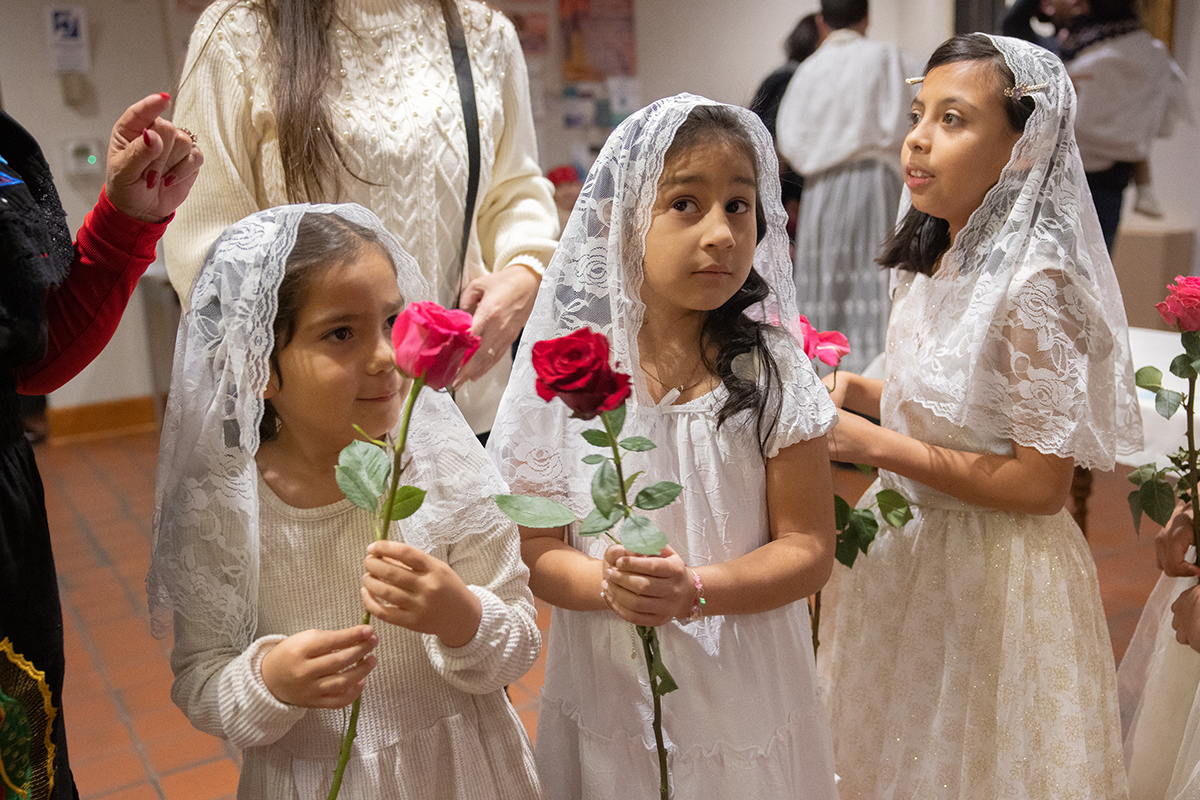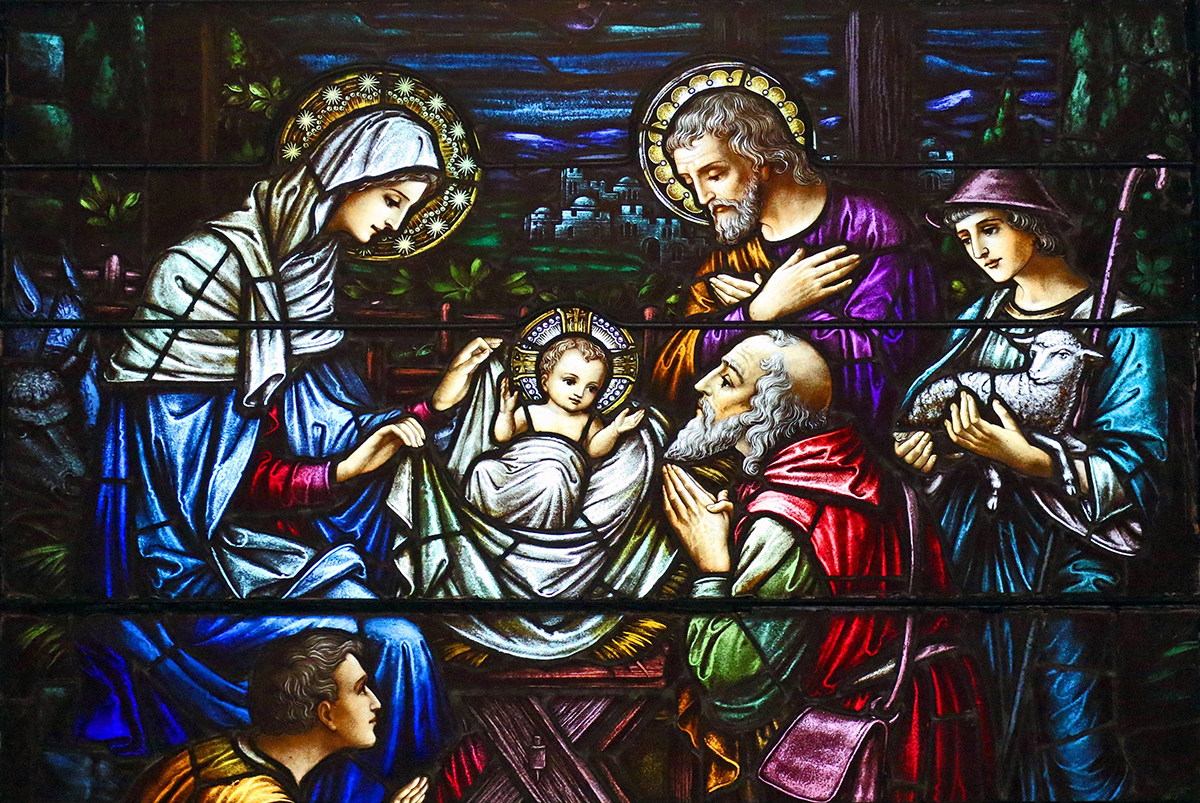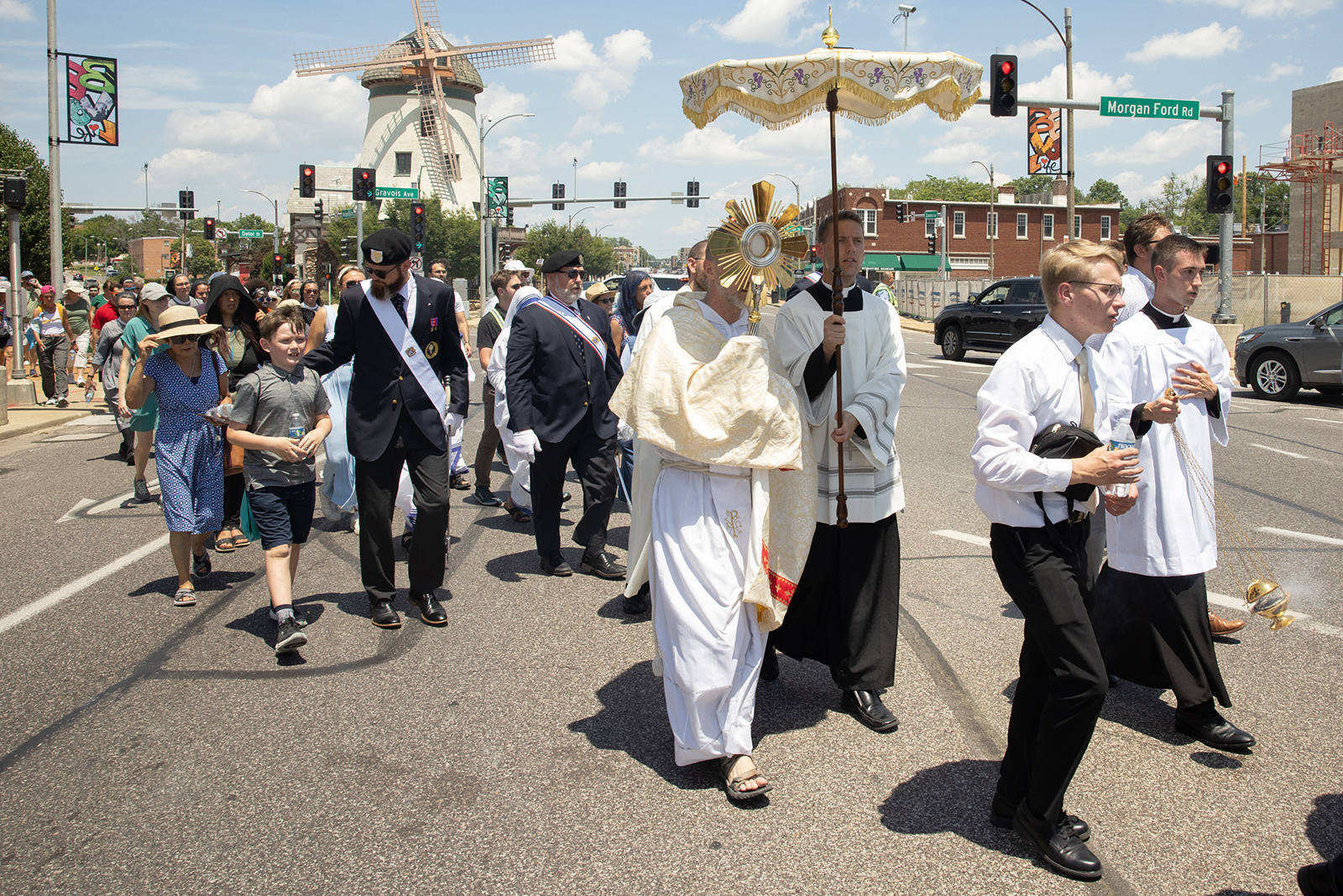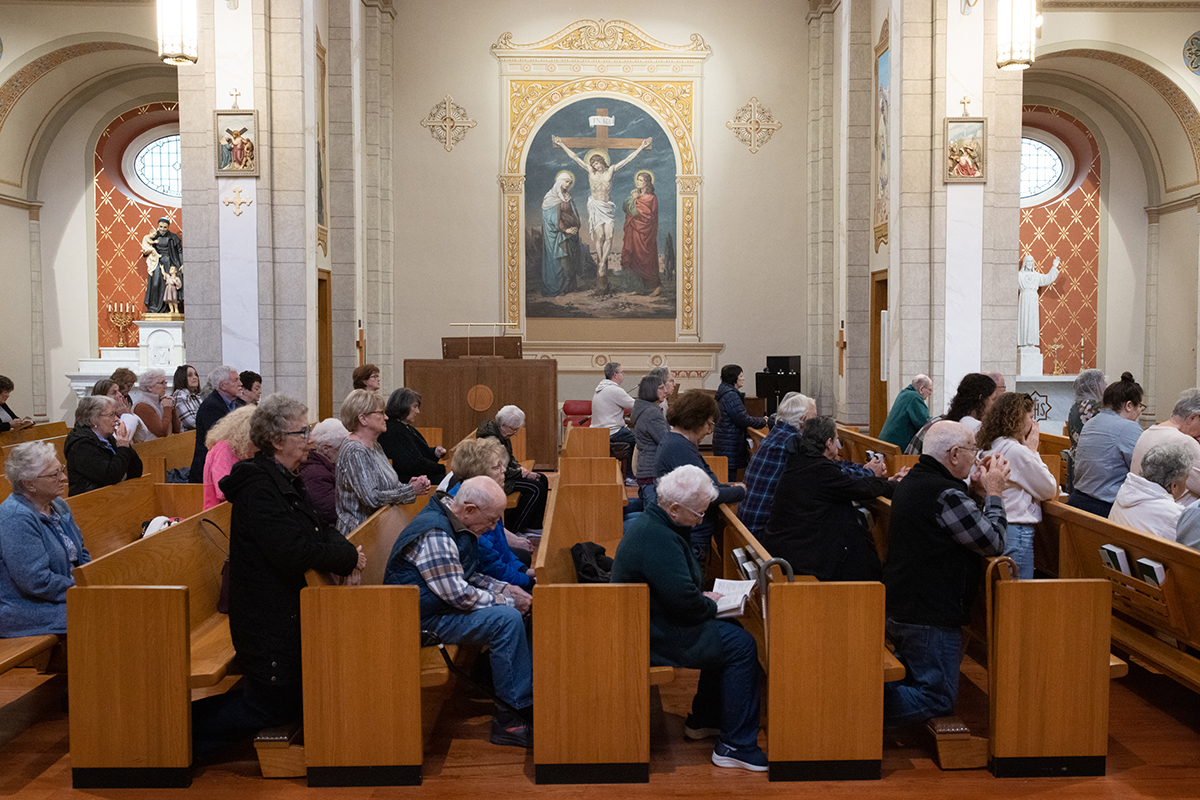Vincentians, miraculous medal look to the future
Beautification, renovations and enhancement set up historic grounds for bright future
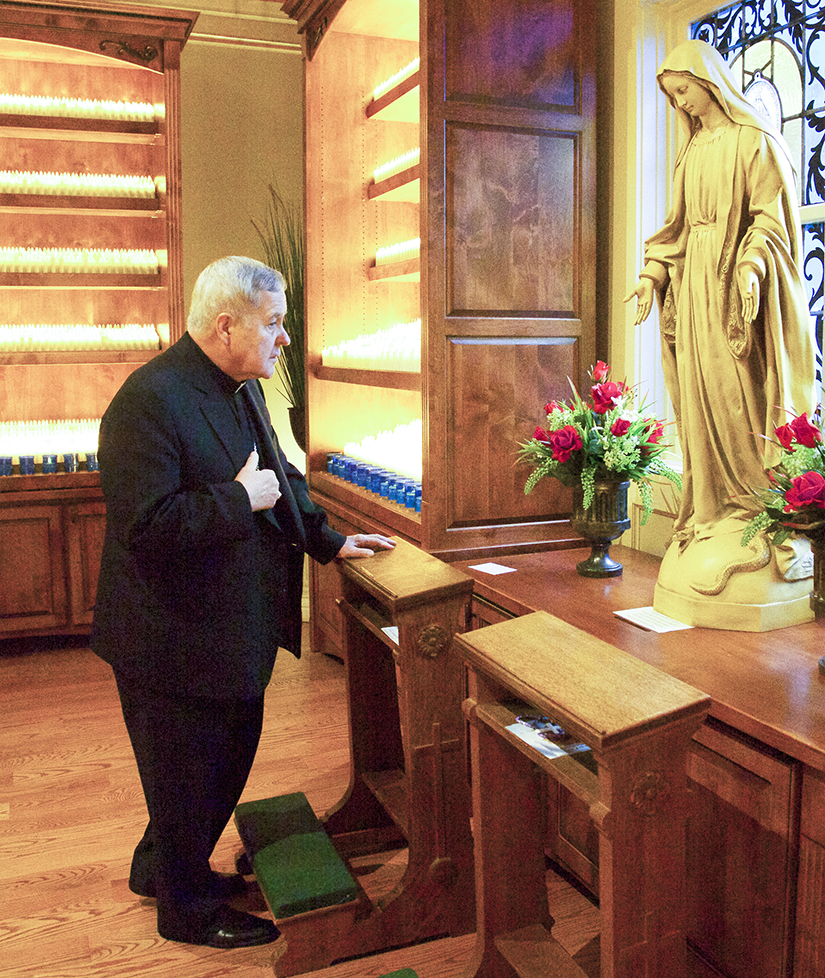
With an eye toward the future, the Vincentians celebrated their past on the second weekend of October.
About 1,300 guests attended the festivities over three days to mark three significant milestones — the 200th anniversary of their settlement in Perryville, the 100th anniversary for the Association of the Miraculous Medal and the 95th anniversary of the Daughters of Charity’s service to the Perryville community.
And it was all celebrated on Saint Mary’s of the Barrens campus, which has undergone a $6 million facelift in renovations, enhancements and beautification over the past two-plus years.
Archbishop Robert J. Carlson celebrated Mass on the final day of the celebration, Oct. 14, with more than 500 congregants inside the historic church at the National Shrine of Our Lady of the Miraculous Medal. He was joined by concelebrant Bishop Edward M. Rice of the Springfield/Cape Girardeau diocese and a former auxiliary bishop in the Archdiocese of St. Louis.
In celebrating “the glorious history … you stop and remember all those who sacrificed for what we have here today,” Bishop Rice said in the homily before looking to future himself, “but you can only look back for so long. If you keep looking back, you forget where you’re going.
“Once this anniversary celebration is finished, the Vincentians (will) continue to bring the Good News to the poor with the zeal and charity of St. Vincent de Paul himself, which compels you to be the face of Christ for the poor and lonely and the least of God’s people.”
St. Vincent de Paul founded the Vincentians — formally known as the Congregation of the Mission — in 1626, and Bishop Louis W.V. DuBourg, bishop of the Louisiana (Purchase) Territory and Florida diocese, invited the Vincentians to start a seminary for his diocese in the second decade of the 1800s. Vincentian Fathers Felix De Andreis and Joseph Rosati and others settled in Perryville in 1818 and built the solid foundation on which to build the St. Louis diocese, which was founded in 1826. Father Rosati became the first bishop of the Diocese of St. Louis.
In addition to Saint Mary’s of the Barrens Seminary, the Vincentians founded St. Vincent College Seminary in Cape Girardeau and administered the St. Louis seminary, which is now Kenrick-Glennon Seminary in Shrewsbury. They helped form archdiocesan priests until 1995.
They also brought with them a strong devotion to the virgin mother of Jesus. At the time of their arrival, Perryville was called the Barrens Settlement, which they re-christened as “Saint Mary’s of the Barrens.” Further, upon arrival, they founded a parish named after Mary’s Assumption into heaven.
The historic church at Saint Mary’s of the Barrens, the second church on the grounds and displaying a cornerstone of 1827, served as the Church of the Assumption until the parish was suppressed in the mid-1960s. In the past two years, the church has been artfully renovated, with hardwood floors replacing tile, meticulous paintings adorning walls, refurbished side altars and handicap accessibility for people from around the globe to visit the Miraculous Medal shrine.
The Blessed Virgin gave the design for the Miraculous Medal — officially, the Medal of the Immaculate Conception —in three apparitions to St. Catherine Labouré in the 1830s. She instructed the Daughter of Charity novice to “have a medal struck upon this model” so that “those who wear it will receive great graces, especially if they wear it around the neck.”
The Association of the Miraculous Medal was founded at Saint Mary’s in 1918, with seminarians, Vincentian brothers and priests building a grotto to Our Lady of Miraculous Medal, starting in 1917 and finishing in 1920. The grotto and statue of Our Lady atop also have been renovated and the area enhanced with a Rosary Wall, a handicap-accessible, meandering circular walkway resembling a Rosary, with round pads serving as beads — all five decades of Hail Marys, along with Our Father and doxology beads
Don Fulford, the CEO of the Miraculous Medal association, called the Rosary Walk, renovations and associated beautification, simply “spectacular” and likewise credited contractor Robinson Construction for “spectacular results.” He also lauded the “many great people” on the association staff, who brought “radical hospitality” to visitors during the weekend of celebrations, greeting visitors, thanking them for coming and wearing ear-to-ear smiles in between.
They helped set up “this wonderful place and beautiful grounds,” as Fulford called Saint Mary’s, to carry the mission of past 200 years into the next 200.
>> Miraculous Medal
The Association of the Miraculous Medal is an apostolate of the Western Province of the Congregation of the Mission (Vincentians). It’s at the National Shrine of Our Lady of the Miraculous Medal on Saint Mary of the Barrens campus at 1811 West Saint Joseph Street in Perryville. For more information, call (800) 264-6279 (MARY) or visit www.amm.org
>> Our Lady
The National Shrine of Our Lady of the Miraculous Medal has a partner in bringing the Blessed Mother to southeastern Missouri.
Like the national shrine in Perryville, the Shrine to Our Lady of the Rosary is in the Ste. Genevieve Deanery, but in Bonne Terre at 7762 Richardson Road.
The shrine was inaugurated by Bishop-emeritus Robert J. Hermann on Oct. 13, 2014, with approval from Archbishop Robert J. Carlson. In 2003, then-Archbishop Raymond Burke approved the movement to establish a shrine to Our Lady of the Rosary, which was initiated in the archdiocese by the World Apostolate of Fatima in Affton. Housed in a temporary structure until a permanent church is built, the shrine features stained-glass windows, life-size statues and a painting of Our Lady of the Rosary.
The shrine is open daily, from 9 a.m. to 5 p.m. For more information about the shrine, call (314) 562-5927, email rosaryshrinebt@gmail.com or visit www.shrinetoourladyoftherosary.com
— Dave Luecking
>> Bishop DuBourg’s arrival
Before arriving on the banks of the Mississippi in 1818, Bishop Louis W.V. DuBourg made three stops in what was to become the Archdiocese of St. Louis, two of which should resonate with Catholic St. Louisans — Perryville and Ste. Genevieve. The third might stump the band, however, perhaps being of use at a parish’s trivia night.
Apple Creek is an unincorporated area in Perry County in southeastern Missouri, and Bishop DuBourg’s first way-station in Missouri en route to St. Louis.
Named after a prominent creek, the area is home to the first parish founded in the newly formed Diocese of St. Louis. In 1828, two years after the diocese was formed, St. Joseph Parish was founded in Apple Creek; the parish was named in honor of prominent area farmer Joseph Schnurbusch, who donated 40 acres for the parish church and cemetery. According to a brief parish history compiled by Father Carl Callier, CM, in 1988, Schnurbusch built a log cabin church and a small log cabin rectory. He also donated 50 acres for a school.
A stone church replaced the log cabin in the 1830s, and the present church was built in 1920s. St. Joseph, which recently celebrated its 190th anniversary, now serves 357 parishioners among 157 families. It’s the southern-most outpost of the archdiocese.
— Dave Luecking, Archdiocesan Archives provided information for this report
Archbishop Robert J. Carlson stood before a statue of Our Lady in the Votive Light Sanctuary in the church at the former parish Church of the Assumption.Photo Credits: Photo by … Vincentians, miraculous medal look to the future
Subscribe to Read All St. Louis Review Stories
All readers receive 5 stories to read free per month. After that, readers will need to be logged in.
If you are currently receive the St. Louis Review at your home or office, please send your name and address (and subscriber id if you know it) to subscriptions@stlouisreview.com to get your login information.
If you are not currently a subscriber to the St. Louis Review, please contact subscriptions@stlouisreview.com for information on how to subscribe.

